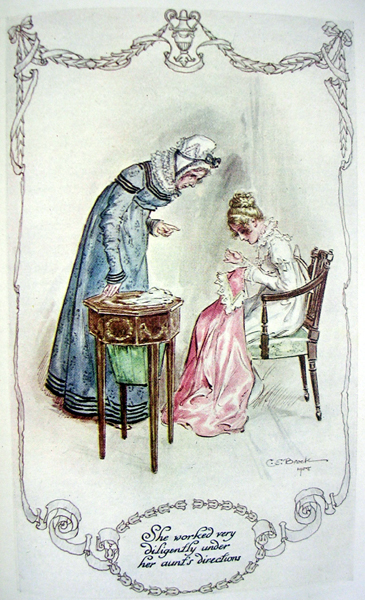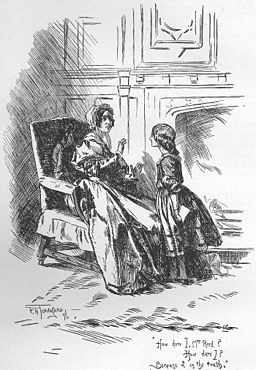This month, we consider what lies at the core of our style. Themes as opposed to plot or events, to use a bookish metaphor. There are a few questions, and then you distill your answers into key words and images. As always, you can download the worksheet (and read the original post & comments) on the Colette site.

How do you feel in your favourite clothes? I think my favourite dress, strangely enough, is one of the plainest: brown, with a faint bleach stain at bench height. But wearing it, I feel capable, adult, set up and ready to go, prepared for everything – practical. (It may help that I like the things I wear with it: my most colourful kerchief and a harmonizing belt.)
How do you feel in not-right clothes? Itchy, uncoordinated (in colour not movement), over-exposed or shapeless; constricted – either in movement or in midsection.
Who are your style icons – what appeals? This is always a difficult one for me, because so seldom do I see anyone who dresses the way I’d like to. Pretty well never, in fact. The closest? Jane Eyre comes to mind, weirdly enough. A small, neat wardrobe, with one or two items reserved for special occasions (but I’d rather not have them all in black or grey!).

And then perhaps Andrea Grinberg for headwear, though her wraps are sometimes larger and more elaborate than I would feel me-ish in. Occasional items worn by the Duchess of Cambridge – although mostly eveningwear, as that seems to be the only time fashion permits the longer length I like. Other than that I mostly see things I like in historical and fantasy movies. (Who’s with me?)
Actually, the 1840s seem to have been a reasonably reasonable time in clothing, compared to many eras: dresses mostly woman-shaped and the skirts not excessively immense. Not keen on the evening drop-shoulder, though: it’s bad for duelling (and most other things you might want to do).
What are some words for styles that aren’t quite you, though you like them?
I’m not sure of the reason behind this question, since “not quite you” isn’t what you really want to be focussing on. I suppose the ladylike suited look of the 1930s appeals, but isn’t quite me. Swashbuckling, Pre-Raphaelite, early medieval… Nice places to visit but I wouldn’t want to live there.

long, fitted, quality, devotee, nonconformist, Melanesian, modesty, historical, kerchief, freedom [of movement], skirts, pockets, layers, waist, privacy.
Add some from this week’s answers. Neat, plain, capable, practical.
Boil down to 3-5 words.
Neat, historical, practical, quality, devotee.
And then – this is the fun bit – you go looking for 15-20 images that express these words for you. Not just images of clothing, but images generally which sum up the feel you’re looking for. You can do this online or old-school (back when cut and paste actually involved scissors and glue). I prefer old-school, but since we’re online, here’s one of mine in digital format.






